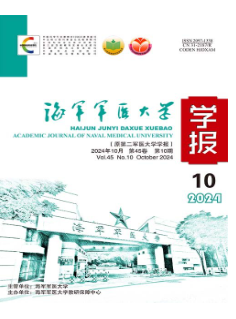Graves眼病患者红细胞分布宽度增高
Q4 Medicine
引用次数: 0
摘要
目的探讨红细胞分布宽度(RDW)与甲状腺相关性眼病(TAO)的关系。方法选取Graves病患者52例(男18例,女34例),GD合并Graves眼病患者39例(男8例,女14例),健康对照22例(男14例)。测量了所有参与者的RDW和甲状腺功能。对GD患者进行Hertel’s exophthalmeter读数(HER)和临床活动评分(CAS)评价等眼科检查,并比较不同组间结果。结果GD患者甲状腺功能与健康对照组比较差异有统计学意义(P0.05),而GD患者合并氧化石墨烯与未合并氧化石墨烯组比较差异无统计学意义(P0.05),合并氧化石墨烯组HER水平明显高于未合并氧化石墨烯组(P0.05)。GD患者的RDW值显著高于健康对照组(P0.05)。GD患者的RDW随CAS的增加而增加,其中GO组的RDW显著高于未GO组(P0.05)。结论RDW与GD患者的状态相关,提示RDW可作为评估GO严重程度的依据。本文章由计算机程序翻译,如有差异,请以英文原文为准。
Red blood cell distribution width is elevated in patients with Graves' ophthalmopathy
Objective To study the relationship between red blood cell distribution width(RDW)and thyroid associated ophthalmopathy(TAO).Methods Fifty-two patients with Graves' disease(GD,18 males and 34 females,39cases of GD patients with Graves' ophthalmopathy[GO])and 22 healthy controls(8 males and 14females)were recruited in the present study.The RDW and thyroid functions were measured in all participants.Ophthalmological examinations including Hertel's exophthalmometer readings(HER)and clinical activity score(CAS)evaluation were obtained in GD patients,and the results were compared between different groups.Results Thyroid functions were significantly different between GD patients and healthy controls(P0.05),while they were not between GD patients with or without GO;the HER level was significantly higher in those with GO compared with those without GO(P0.05).The RDW value in patients with GD was significantly higher than that in the healthy controls(P0.05).For GD patients,RDW increased with the increase of CAS,and those with GO had significantly higher RDW than those without GO(P0.05).Conclusion RDW is associated with the state of the GD patients,indicating that RDW may provide evidence for assessing the severity of GO.
求助全文
通过发布文献求助,成功后即可免费获取论文全文。
去求助
来源期刊

海军军医大学学报
Medicine-Medicine (all)
CiteScore
0.50
自引率
0.00%
发文量
14752
期刊介绍:
Founded in 1980, Academic Journal of Second Military Medical University(AJSMMU) is sponsored by Second Military Medical University, a well-known medical university in China. AJSMMU is a peer-reviewed biomedical journal,published in Chinese with English abstracts.The journal aims to showcase outstanding research articles from all areas of biology and medicine,including basic medicine(such as biochemistry, microbiology, molecular biology, genetics, etc.),clinical medicine,public health and epidemiology, military medicine,pharmacology and Traditional Chinese Medicine),to publish significant case report, and to provide both perspectives on personal experiences in medicine and reviews of the current state of biology and medicine.
 求助内容:
求助内容: 应助结果提醒方式:
应助结果提醒方式:


